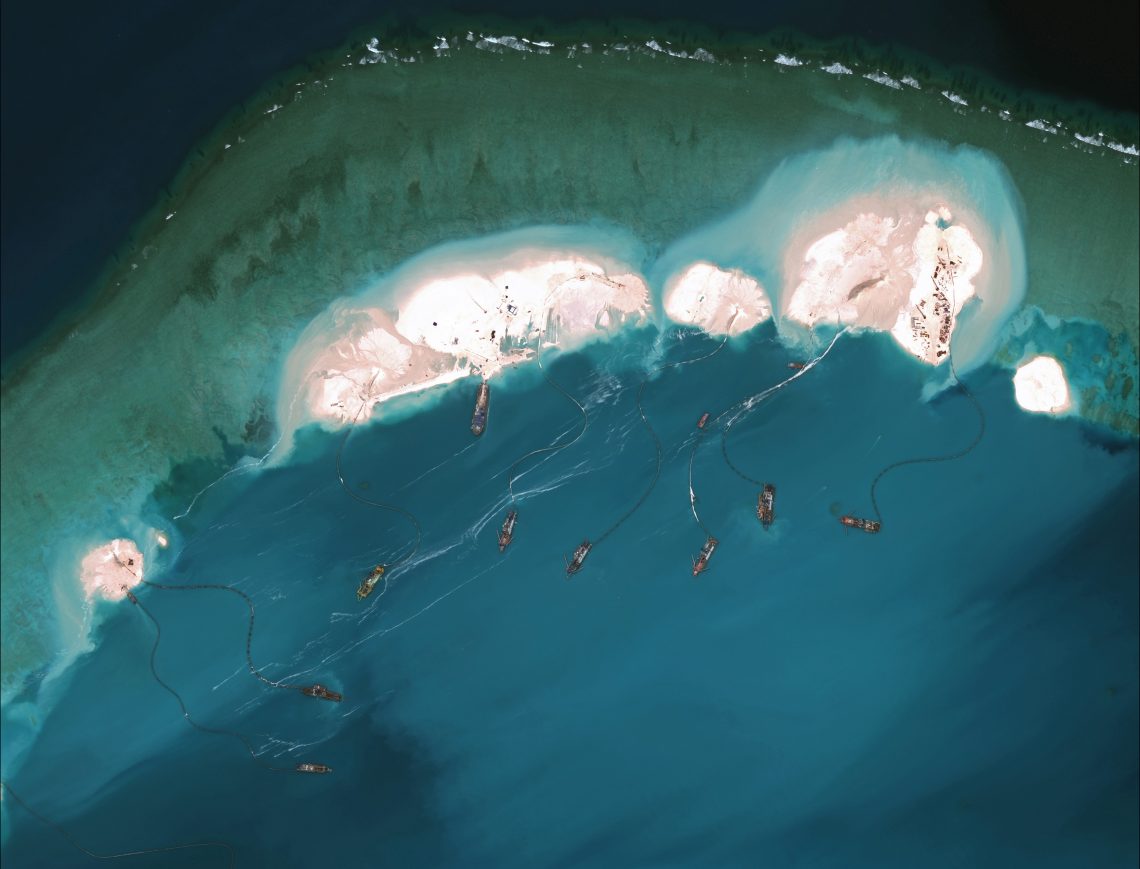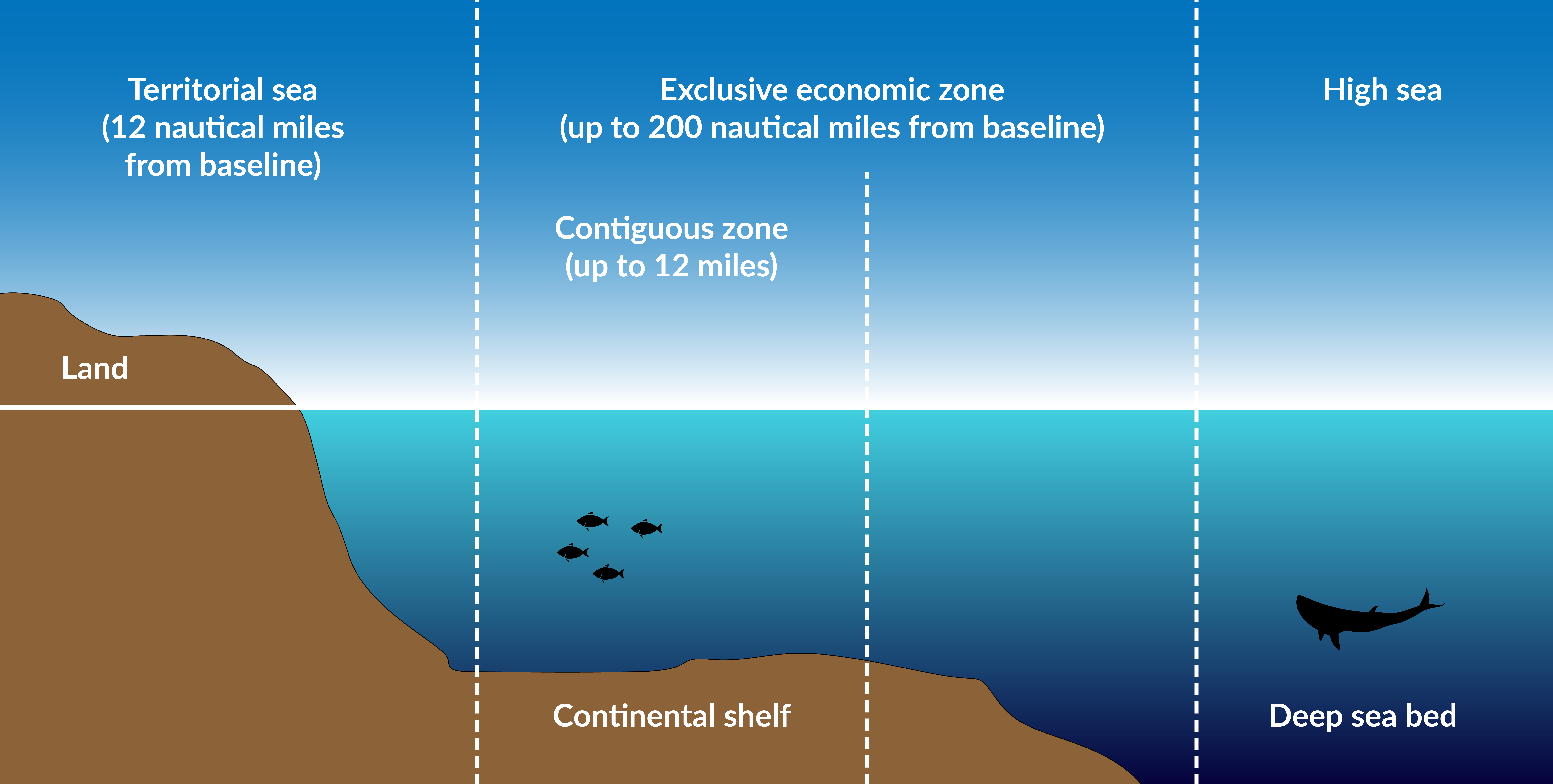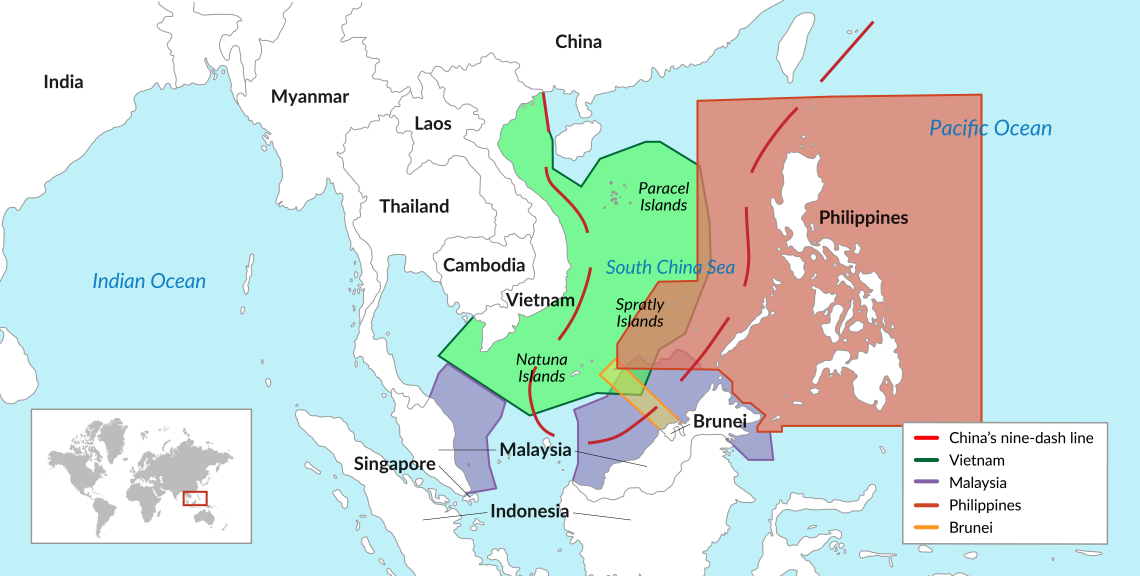Who will own the oceans?
Current shifts in the global geopolitical order could influence how unresolved maritime disputes evolve.

In a nutshell
- Valuable underwater resources have raised the stakes of maritime law
- Unresolved disputes usually stem from preexisting political conflicts
- The war in Ukraine will affect further developments
At one time, papal bulls settled the argument over who owned the oceans, such as the one delivered in 1493 by Pope Alexander VI, which divided the oceans between Spain and Portugal. In 1609, Dutch jurist Hugo Grotius dismissed the role of religion in maritime matters and declared that natural law provided “freedom of the seas” for all humankind in his seminal work, “Mare Liberum.”
However, as fishing stocks depleted off the British Isles, the Dutch who had been fishing there for centuries came to be seen by Scottish and English fishermen as a threat to their livelihood. This prompted King James I of England to claim the right to limit access to nonnatives.
In response to Grotius’ stance that the seas should be open to all nations, Englishman John Selden’s “Mare Clausum” (Closed Seas), written in 1635, supported King James’ claim and argued that portions of the seas could be under the jurisdiction of one nation and closed to foreigners. This concept was adopted by other coastal nations eager to protect native fishing industries, but it also raised the question of how far this jurisdiction should apply. The initial distance was three nautical miles (nm), which was the range of a cannon and therefore the limit of the protection that a coastal state could provide. By the 1950s, again for economic reasons (the tuna industry), several South American nations declared that coastal state jurisdiction extends to 200 nm.
Islands offer value for the benefits they bring from their maritime rights. This incentivizes states to raise claims to title for disputed island territory – or to try to pass off rocks as islands.
In modern times, scientific and technological advancements have meant that more of the world’s oceans (which cover 70 percent of the earth) are under the authority of a coastal state than ever before.
To reduce conflict potential and resolve disputes when they arise, international rules for the law of the sea were established in the United Nations Convention on the Law of the Sea (UNCLOS), often referred to as the “Constitution of the Ocean” because of its importance.
UNCLOS
UNCLOS took nine years to negotiate and build on earlier treaties and customary international law pertaining to the oceans. Completed in 1982, the treaty came into force in 1994 and is currently signed and ratified by 168 states. It sets out the geographical jurisdictions of coastal states and their sovereignty or sovereign rights over key maritime zones, namely the territorial sea, the exclusive economic zone, and the continental shelf.
The limits of the territorial sea, which varied from three nautical miles to 200 nautical miles from one country to the other, were settled: a coastal state’s sovereignty extends out from the baseline (low-water line) up to 12 nautical miles (nm). The coastal state’s sovereignty over this area includes the seabed and subsoil as well as the airspace above it.
Facts & figures

Harkening back to the Grotius vs. Selden debate, despite the coastal states’ sovereignty over territorial seas, UNCLOS allows all ships innocent passage without interference.
Coastal states agreed to a 12nm limit for the territorial sea because of the creation of exclusive economic zones (EEZ), which addressed concerns about protecting their natural resources. The EEZ, which extends 200nm from the baseline, gives states exclusive sovereign rights (though not sovereignty) to “explore, exploit, conserve and manage” natural resources whether living (such as fisheries) or nonliving (such as oil and gas). This right is enormously valuable. Although only about 36 percent of the oceans are claimed under an EEZ, approximately 90 percent of harvestable resources are in them.
The continental shelf is the submerged, natural prolongation of the coastal nation’s land territory consisting of the seabed and subsoil. This maritime zone extends to the outer edge of the continental margin, or to a distance of 200 nm if the outer edge does not extend that far. If the land mass extends further than that, the nation must define its extended continental shelf limits using specific formulas set out in the convention. Coastal nations possess the sovereign right to “explore and exploit” the natural resources in their continental shelf, which holds resources such as shellfish and valuable minerals like ferromanganese nodules.
Under UNCLOS, an island, which is defined as a “naturally formed area of land, surrounded by water, which is above water at high tide,” is also entitled to a territorial sea, EEZ, and continental shelf. Islands therefore not only offer value for what they provide on land but for the benefits they bring from their maritime rights as well. This incentivizes states to raise claims to title for disputed island territory – or to try to pass off rocks as islands. But UNCLOS is clear on the matter: “rocks which cannot sustain human habitation or economic life of their own shall have no exclusive economic zone or continental shelf.”
Disputes
The convention provides for dispute settlement through the International Tribunal for the Law of the Sea in Hamburg, through international arbitral tribunals, and through the International Court of Justice in The Hague, in addition to encouraging state-to-state negotiation and conciliation. Most maritime boundary disputes are settled through negotiation, with 25 having been settled through arbitration or adjudication.
Maritime boundary disputes can be found on all continents. Out of 460 possible maritime boundaries, approximately 280 have been agreed upon, leaving 180 unresolved maritime boundary disputes. Overlapping maritime claims and boundary disputes such as opposing or adjacent coastlines are often quickly resolved by following the rules established in UNCLOS.
Disputes that make the headlines are often caused by underlying political tensions or, in the worst cases, because of a fundamental rejection of the international rules-based order.
Israel and Lebanon
In the eastern Mediterranean, Israel and Lebanon each claim about 860 square kilometers (330 square miles) of the Mediterranean Sea as part of their own exclusive economic zones. The issue is complicated due to the politics involved; Israel and Lebanon have no diplomatic relations and are, technically at least, still at war. The UN has hosted United States-led mediations between the two countries, which have been on-again, off-again to the frustration of all. Settling the dispute could lead to lucrative oil and gas deals that Lebanon desperately needs.
Greece and Turkey
Heightened tensions can also be found in the Aegean Sea and Eastern Mediterranean, where there are significant unresolved issues between Greece and Turkey. One issue involves Turkey’s maritime boundaries with over 2,400, mostly Greek, islands off its Aegean and southern coasts. Greece, a state party to UNCLOS, claims the 200nm EEZ and continental shelf that it is entitled to under the convention for each island. Turkey, which has not signed UNCLOS, rejects Greek claims and seeks to delimit the area under equitable principles, ignoring the islands.
With billions, if not trillions, of dollars’ worth of natural resources inaccessible due to ownership issues, and the potential for military conflicts at stake, resolving maritime disputes peacefully is critical.
The discovery of gas off Cyprus, which has been divided since 1974, is another issue contributing to Greek-Turkish tensions. Ankara’s drilling and exploratory ships in contested waters added fuel to the fire. So did its 2019 maritime delimitation agreement with Libya’s UN-backed government, which overlapped with competing claims. Libya, a UNCLOS party, later backed away from the deal, which was contrary to the convention.
Resolving the multiple disputes between Greece and Turkey is difficult not only because of domestic and international politics on both sides, but because the nations are trying to resolve their disputes using different sets of rules. Greece is applying UNCLOS rules, and Turkey, a nonparty, is not. Most of UNCLOS is now considered customary international law, meaning that it is applicable to all nations even those that have not signed it. A significant source of wealth for Turkey and Greece – as well as Cyprus – will remain idle until both countries surmount their differences and identify a joint path forward to peaceful dispute resolution.
China
China was a full participant in the UNCLOS negotiations and remains a party to the convention. However, its actions in the South China Sea are at odds with the rules and principles of the treaty.
One issue is Beijing’s delimiting of the Paracel Islands by “straight baselines,” which is reserved only for archipelagic states, that is, nations that are only made up of islands like Indonesia. China created a boundary around the cluster of islands and declared the area within the baselines to be “internal waters,” thereby preventing access, including “innocent passage,” to all other nations, thus contravening the UNCLOS principles.
A second issue that is causing great instability in the South China Sea is China’s so-called “nine-dash line” claim to “historic rights” that encroaches on the exclusive economic zones of the Philippines, Indonesia, Vietnam, Brunei and Malaysia. Beijing’s rising power has led to ever more aggressive actions and intimidation, including blockading offshore oil and gas development, threatening fishing vessels and conducting unauthorized seismic surveys.
Facts & figures

A 2016 arbitration brought by the Philippines determined that China’s claim was contrary to UNCLOS. The tribunal dismissed China’s claim to an EEZ for shoals and islets or rocks, which are only entitled to a 12nm territorial sea, and for artificially created islands. It was determined that the appropriately named Mischief Reef was within the Philippines’s EEZ and that Chinese fishing in the area was therefore unlawful. Beijing refused to acknowledge the decision.
A final issue of global concern is China’s one-sided application of freedom of navigation – one of the most important principles embodied in the law of the sea. Chinese leadership requires “foreign ships for military purposes” to get advance approval before entering its territorial sea (including the disputed South China Sea) yet makes use of the innocent passage provisions of UNCLOS for itself around the world.
Scenarios
Maritime boundary delimitation is a complex legal and technical process. With billions, if not trillions, of dollars’ worth of natural resources inaccessible due to ownership issues, and the potential for military conflicts at stake, resolving maritime disputes peacefully is critical. And the war in Ukraine is a harbinger for the future of the rules-based international world order.
In the first scenario, Russia wins against Ukraine and a Hobbesian world of unrestrained, “might makes right” is unleashed. China comes to see Russia’s actions as a damaging but ultimately effective way of doing business, possibly replicating the strategy in Taiwan or the South China Sea. Governments worldwide are shown that threats, military force, breaching of international norms and the ability to withstand or break economic sanctions ultimately lead to success.
Turkey doubles down on its relationship with Russia and turns ever further away from Western liberal democracies, rejecting UNCLOS principles.
In the second scenario, NATO and the European Union remain united and help Ukraine prevail against Russia; the rules-based international world order remains intact. A united West provides the heft that Southeast Asian countries need to withstand the economic and military pressures that China is imposing on them. Coordinated freedom of navigation maneuvers in illegally claimed waters, economic sanctions, and boycotting of fish caught outside of Chinese waters impose costs on Beijing for flouting international legal rules, encouraging it to adhere to its obligations.
Without Russian support, and with the possibility of an enlarged “European political community” as floated by French President Emmanuel Macron, Turkey is nudged into applying UNCLOS rules.
In the third scenario, unity disintegrates as NATO countries disagree on whether to help Ukraine push Russia out of the entirety of its territory. The Kremlin holds on to enough Ukrainian land to claim victory, even if only a partial one. Like in the first scenario, the situation demonstrates that breaching international law will incur limited costs where political will is lacking.








